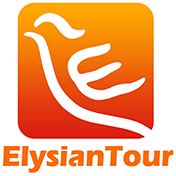Shaanxi History Museum
Xi'an, joined by Athens, Cairo and Rome, is one of the world's Top Four Ancient Capitals, and Shaanxi, the home province to this ancient city, is one of the cradles of Chinese civilization. 13 dynasties, including the most prosperous Zhou, Qin, Han, and Tang, established their capitals here and as a result, abundant cultural remains and profound historical legacies have been left behind here. Shaanxi History Museum, located at the southern suburb of Xi'an and housing more than 370,000 pieces of historic and cultural relics unearthed in the province, is the first state-level modernized museum in China.
Constructed from 1983, Shaanxi history museum –opened to the public since 1991. Covering an area of 65,000 square meters, the building complex follows the construction style of the Tang Dynasty. The predominant colors of the buildings are white, grey and black which create an atmosphere of solemnity. The main buildings of Shaanxi History Museum include the preface hall, basic exhibition halls, special exhibition halls, and temporal exhibition halls. The basic exhibition halls are a must-see section and the most popular area in the museum.
The basic halls are divided into three exhibition areas displaying around 2,000 pieces of relics, ranging from the stone-made tools in pre-historical time to implements in 1840 years ago. With a time span of over 1 million years, the collections are displayed on the basis of dynasties, namely are Prehistoric Age, Zhou, Qin, Han, Wei Jin Southern and Northern Dynasty, Sui and Tang, Song, Yuan, Ming and Qing Dynasties. The most popular sections are as follows.
- Section 1: Prehistoric Age (about 1.63 million years ago ~ 21st century BC)
- Section 2: West Zhou Dynasty (1046 – 771 B.C.)
- Section 3: Qin Dynasty (221-207 B.C.)
In this section, you will find archaeological discoveries dating back to one million years ago when ape man lived an unsophisticated life by the delta of Yellow River. Apart from the fossil of the Ape-man skull and trace of fire use, you could see a great number of chipped and polished stone tools from the Palaeolithic age and the Neolithic Age. Moreover, the light of human civilization is showcased with various pottery vessels and utensils from an ancient matriarchal clan society of Banpo Village excavated in eastern suburbs of Xian. You could also trace the Yangshao Culture by the tip-bottomed bottles, stone balls, pottery plummets, bone arrows, harpoons and the painted pottery utensils that date back around 5,000 to 7,000 years ago.
The foundry technology of bronze ware reached its peak in the West Zhou Dynasty. You will feast your eyes on a great variety of exquisite bronze vessels, including ritual and musical instruments, daily utensils, production implements as well as weapons. Bianzhong is a big draw in this section. It is an ancient Chinese musical instrument made up of a set of bronze chime bells of uneven sizes. Besides, two national treasures including Wusiwei Tripod and Duoyou Tripod shall not be missed, as they display the glorious civilization of Zhou through the inscriptions carved inside the vessels.
The jaw-dropping Terracotta Army is exactly the most striking relics of Qin Dynasty, and in this hall, you get a superb chance to see the life-sized soldiers face to face leaning against the glass. Qishihuang united all other kingdoms and became the first emperor in China history. After founding the first feudal dynasty Qin, Qinshuhuang achieved unprecedented prosperity in military affairs, economy, science, technology and culture. Various weapons, Terracotta Warriors and Horses, tiles, and bronze chariots and horses unearthed in the Mausoleum of the Emperor Qinshihuang (the first emperor of Qin Dynasty) are exhibited in this section. In addition, a tiger-shaped commander seal is a great witness of the well-refined military system of Qin army.
- Section 1: Han Dynasty (206 B.C. – 220 B.C.)
- Section 2: Wei Jin South and North Dynasty (220-589 A.D.)
Han Dynasty is one of the most developed economic periods in Chinese history, and it cast profound influence on the mainstream culture of ancient China. Now Han people occupy the largest population among China 56 nationalities. The language most Chinese speak is called Hanyu, and Chinese characters people write are called Hanzi. In Han Dynasty, high priority was given to agriculture, so most of the collections in this area are relative to farming, such as iron farm tools, pottery utensils with grain, pottery oxen, chicks, ducks and pigsties.
The Highlights of this section are Gilt Bronze Incense Burner, an imperial gift of the Emperor Wudi to his elder sister, and Goose Shaped Colored Brass Lamp, a goose-shaped lamp with a fish in its mouth, which display an advanced consciousness of environmental protection. Looking further, you will also spot the armless naked miniature pottery figurines unearthed from imperial mausoleums and priceless national treasures including the empress’ jade seal and a bamboo-shaped gilt incense burner.
Shaanxi, a political center during the social upheavals and national amalgamation of the South and North Dynasty, has plenty of legacies with the features of this period. In this exhibition hall, the pottery figures, which represent different nationalities, were abundant in number and varied in shape. Buddhism and Buddhist art underwent rapid development during this period. The gold, silver, bronze and jade Buddhist statues on display here are vivid evidence of Buddhist art during this period.
- Section 1: Sui and Tang Dynasties (581-901 A.D.)
- Section 2: Mural Paintings' Hall and Tang Heritage Exhibition Hall
- Section 3: Song, Yuan, Ming and Qing Dynasties (960 - 1912 A.D.)
Sui and Tang dynasties were the most prosperous period in ancient Chinese civilization. Gold and silver wares at this time were exquisitely made, which are the evidence of the advanced technique of this period. Plenty of tri-color glazed ceramics and exquisite bronze mirrors are main draws of the exhibition halls of Tang Dynasty. Moreover, there are two national treasures forever forbidden to exhibit in foreign country in the museum, which are both in this area. One is the Gilt Silver Jar with Pattern of Dancing Horses, and the other one is an Agate Cup with Beast Head. Other invaluable collections are Gold Bowl with Yuanyang and Lotus Pattern, Tri-colored Camel with Musician Figures, and Gilt Silver Bottle with a Handle and Parrot Patterns.
Besides the basic exhibition halls, two special exhibition halls at extra cost are other favorites for tourists. One is the Mural Treasures' Hall in the Tang Dynasty, which was only open to visitors like head of state before 2017. Now it charges an extra entrance fee of CNY300 per person for common visitors. Murals from the Tang Dynasty are the most distinctive and precious treasures in Shaanxi History Museum. There are about 600 murals, which cover an area of over 1,000 square meters. These murals vividly depict the rituals, lifestyles, dress features, forms of entertainment, and architectural styles of the Tang Dynasty. The murals in Shaanxi History museum are very important basis to research the people's lifestyles during the period, particularly the nobility's lifestyles.
Another distinctive area is the Tang Heritage Exhibition, in which displays the Great Archaeological Findings in the 20th Century. The Tang Dynasty was the most prosperous dynasty in Chinese history. Gold or silver vessels and jade wares were the typical representations of applied art. Therefore, when the Tang's heritage came to light, it became a highlight in Chinese archaeological findings. There are over 30 precious Tang Dynasty jade wares and gems displayed in this exhibition, including the treasure of this museum – and agate cup fashioned to replicate a beast's head.
After Tang Dynasty, Xian was no longer the capital city of the feudal, but there were still a number of national treasures discovered. The most remarkable relics should be porcelain wares from Yaozhou Kiln, among which the smartly-designed green glazed tea pot and black glazed oil-dotted bowl of high techniques are worthy of your attention.
1. The museum is quite crowded most days, so you may need to navigate through throngs of people to get a closer look at some of the pieces.
2. Certain pieces have English descriptions while most of the collections don't. Limited amount of English audio guides is provided at a little cost, and if it is not available, private guide is definitely a good choice for you to know all the aspects about the exhibitions.
3. For security concern, visitors may not take their bags into the museum, so always keep your ticket with you for you may need it for entrance of certain halls.
4. Come early to avoid the long line, or just buy a ticket of the Tang Heritage Hall at a cost of 30 CNY to skip the line if you are not an early bird.
Opening hours:
8:30-18:00 (March 15 to November 14)
9:00-17:30(November 15 to March 14)
Closed on Mondays
Admission fee:
Free for basic exhibition halls (with a quota of 6,000 free tickets per day)
30 CNY for Tang Heritage Hall and 300 CNY for Mural Paintings' Hall
Closed on Mondays
Transportation:
By bus: take bus no. 5, 19, 24, 26, 27 or tourist bus no.6 or no. 8 and get off at Guihualu Station.
By subway: Take the subway line 2 or line 3 and disembark at Xiaozhai Station. Get out of Exit D and walk eastwards for about 400 meters, you will see the entrance of the museum.









